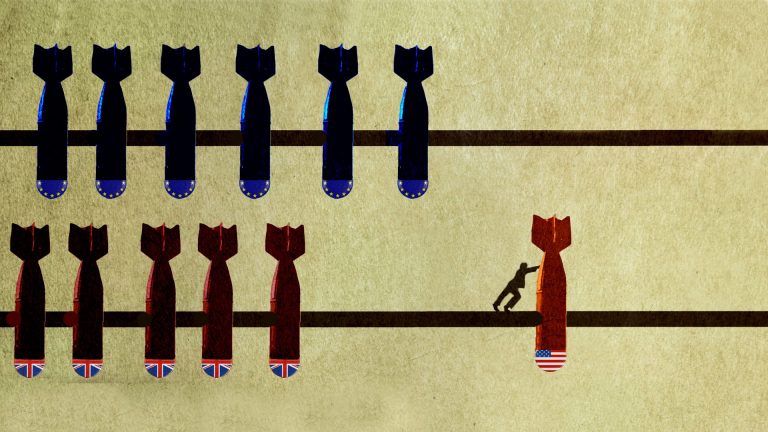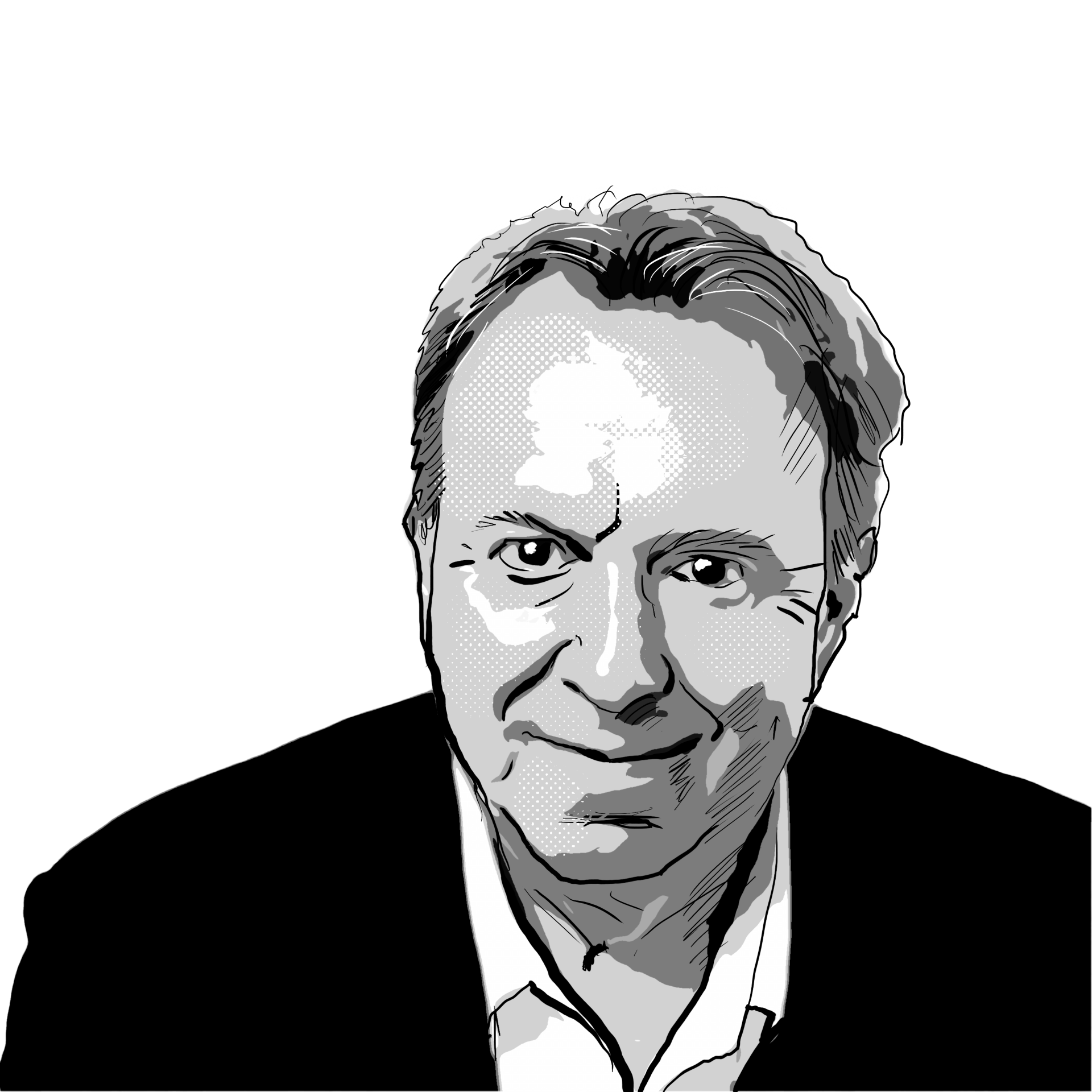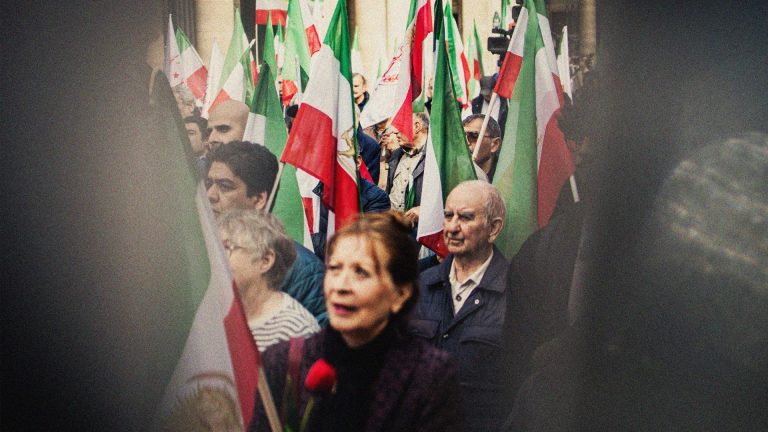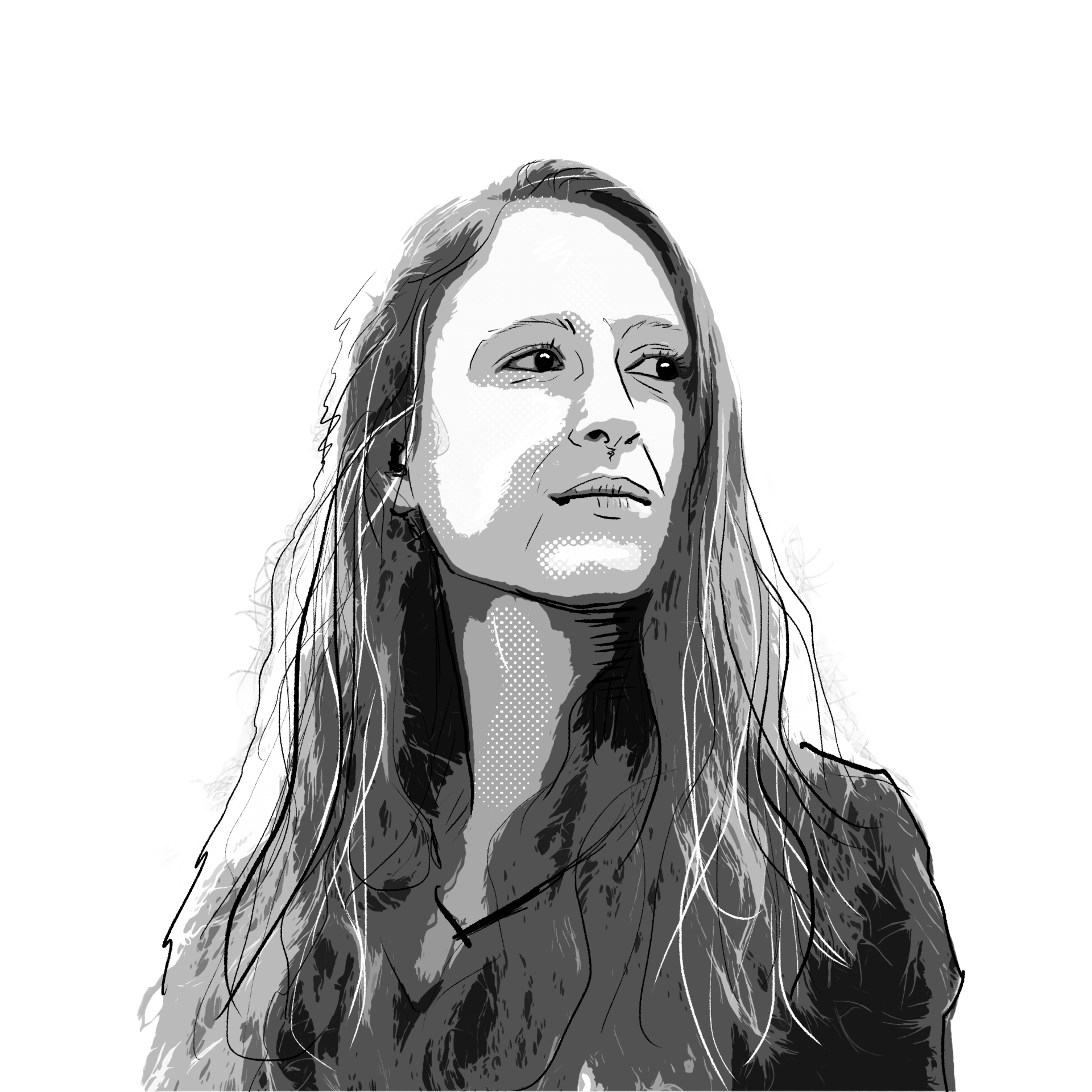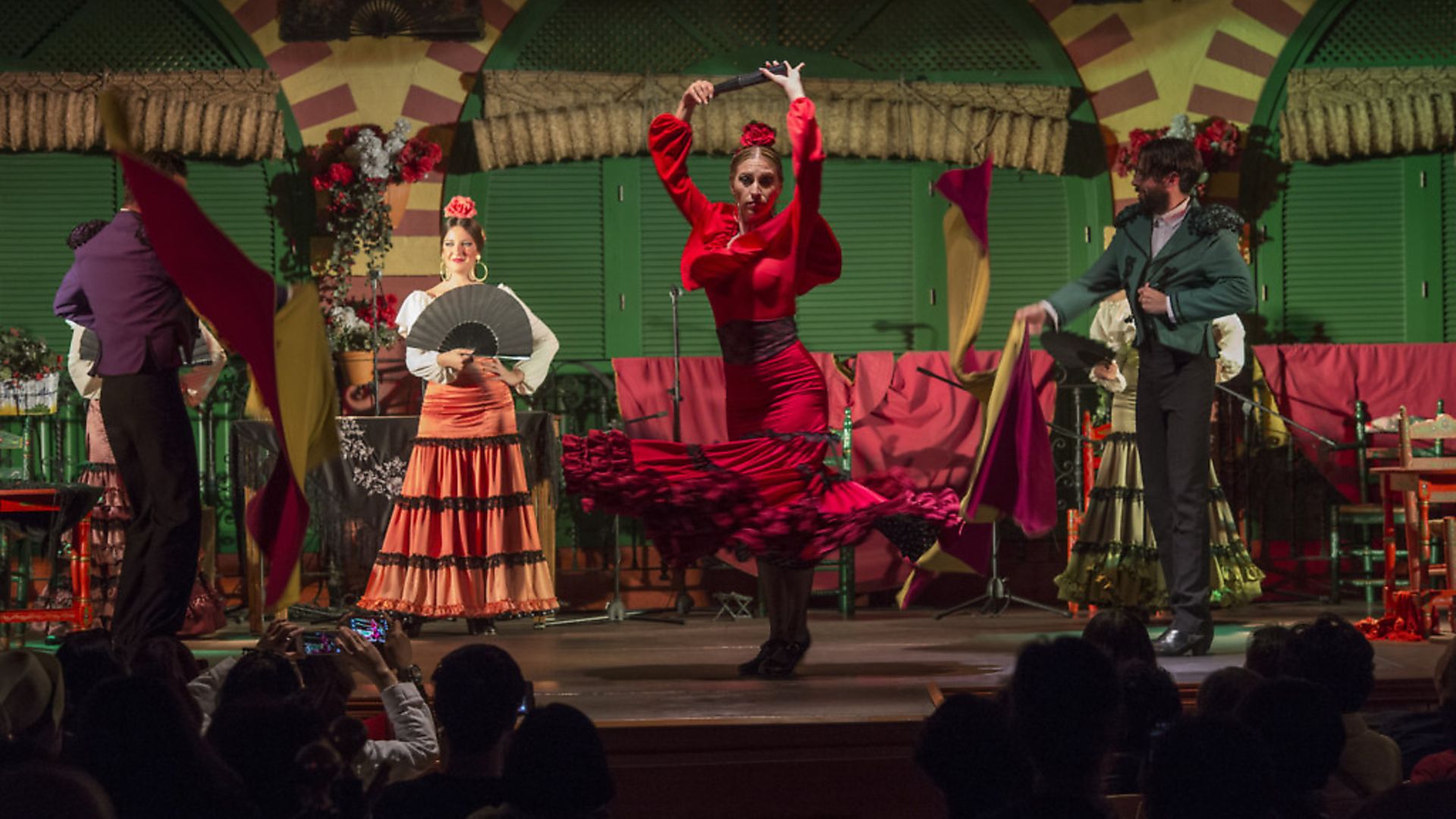
Few cities possess as intimate a connection to a musical style as Seville, SOPHIA DEBOICK reports.
The cultural energy of Seville pulsates to a musical beat. Whether it’s found in the processions of Semana Santa (Holy Week), where religious statues sway through the streets to a sombre accompaniment of brass bands, or the march of the pasodobles taurinos at the bullfight, the city has its own distinctive rhythm.
But the most significant Sevillian sound is the thrum of heels on the floorboards of the tablaos, the flamenco show venues that the city is famous for. And while Seville’s bewilderingly monolithic 15th century cathedral which houses the tomb of Christopher Columbus easily makes the UNESCO World Heritage List, flamenco too has a UNESCO listing for its intangible cultural heritage and looms just as large over this deeply musical city.
While flamenco, like many a folk genre, is subject to endless debates over what constitutes ‘authenticity’, its essential alchemic power remains indestructible.
It is rough-edged and emotionally unbridled, yet with the implied precision of a religious rite or magical incantation – the artistic spirit speaking through the flamenco performer in the moment of maximum emotion is known by the folkloric term duende, after all, and flamenco singing shares something fundamental with the Muslim call to prayer. That is not coincidental, since flamenco has its roots in the culture of the Andalusian Romani gypsies (gitanos), who migrated from northwest India to Spain in the Middle Ages and fused the culture of Moorish Spain with their own.
The process of development of flamenco from a highly culturally-specific and family-based private activity of gypsy culture, strongly focussed on the singer, to a genre of public performance synonymous with dance was a slow and complex one, but it always involved the melding of multiple influences and it all began in Seville.
The flamenco singer Silverio Franconetti was a payo (non-gypsy) born in Seville in 1831, but learned his trade from the gypsy population of Morón de la Frontera, south east of Seville, where he grew up (later, the town also spawned the legendary flamenco guitarist, Diego del Gastor).
Although famed for his voice, which the poet Lorca described as “the thick honey of Italy mixed with our lemon”, his lasting legacy was the invention of the café cantante, of which Lorca wrote evocatively of images of “long trains of silk”, “crystal lamps and green mirrors” and the “rattling beetle” of the castanet.
Franconetti opened the first of these at in Calle Rosario, one of the maze of narrow streets in Seville’s historic centre. And the idea of the flamenco café was quickly adopted in other regional capitals.
Franconetti’s fortunes waned as the no-holds-barred cante jondo (‘deep song’) gypsy style of flamenco was surpassed in popularity by the lighter fandangos influenced by Andalusian folk songs, but he had brought flamenco out of the gypsy villages and into the cities, shifting it from the private to the public sphere forever.
Only three decades after Franconetti’s death, Lorca and his artistic kin were so worried about the loss of authentic flamenco that they set about collecting songs and launched the first national competition for flamenco singers. But the genre would continue to change along with the fortunes of Spain.
The 1960s was a key era, as the more theatrical set-up of the tablao began to replace the intimate cafés cantantes, bringing the focus to dance over music. And while gypsies were persecuted under Franco, this art form that was so inextricably linked to them was vigorously promoted as the Spanish tourist industry exploded.
The Tablao Los Gallos opened in the barrio de Santa Cruz, Seville’s former Jewish ghetto, in 1966, while El Patio Sevillano had already been open on the central Plaza del Duque for 10 years by then, moving to a site next to the bullring in 1973.
Both remain in business to this day, and along with the founding of the Festival de Cante Jondo in Mairena del Alcor, to the east of the city, in 1962, and the Festival de Flamenco in Morón de la Frontera in 1963 – which also celebrates the famed gazpacho Andaluz – the 1960s saw a landscape of platforms for flamenco established with Seville at the centre.
While many bemoaned a loss of authenticity with this flamenco explosion, in the following decade maverick innovators would spark even greater controversy as they took flamenco music in a new direction.
Camarón de la Isla, the virulently charismatic performer considered by many to have been the best flamenco singer ever, and guitar legend Paco de Lucía both hailed from the Andalusian province of Cádiz, neighbouring that of Sevilla, but the city played a significant role in their careers.
They pioneered the controversial nuevo flamenco fusion sound in 1970s, and Camarón’s ground-breaking adoption of rock instrumentation on his La Leyenda del Tiempo (1979), at a time when Seville’s Triana were fusing flamenco and prog rock into rock andaluz, as well as Paco’s experimentation with jazz caused no less consternation among purists. Camarón’s career had begun in Seville, when he emerged from obscurity to win first prize at the Festival de Cante Jondo aged just 16. Paco de Lucía would describe Seville as “my town” when he pulled out of a 1989 performance at the city’s bullring following a spat about his billing, and therefore, he felt, that of flamenco itself, versus that of Madrid’s Plácido Domingo and Julio Iglesias.
He took a prominent role in the city’s Bienal de Flamenco and the huge Expo ’92 celebrations for the 500th anniversary of Columbus landing in the Americas, as well as working with Sevillians, from the gypsy singer known as La Tana, to the celebrated Juan Peña, known as El Lebrijano.
While the proud gitano Camarón escaped poverty for wealth and fame, the experience of deprivation continued to be channelled through the traditionally mournful mood of gypsy flamenco into the 1980s.
While picturesque Triana on the west bank of the Guadalquivir river was once the gypsy quarter of Seville, gentrification and a council policy of resettlement in the 1970s meant the El Vacie shanty town beyond the city’s SE30 ring road and the tower blocks on the south-eastern periphery in an area known as Las Tres Mil Viviendas (The 3,000 Homes) became the gypsy locales.
Las Tres Mil Viviendas, notorious for crime and drugs, spawned some startling flamenco artists. Juana la del Revuelo was born in Triana in the early 1950s but was one of those moved out to the new estates where she formed a flamenco group with her husband, singer of celebratory bulerías, Martín Jiménez Revuelo, and her guitarist son, Martín Chico.
A larger than life figure, she had an imposingly matriarchal appearance with a traditional frilled apron as her trademark.
More revolutionary were brothers Raimundo and Rafael Amador who grew up on the estates and formed the band Pata Negra in the early 1980s, branding their blues-infused flamenco on albums like Blues de la Frontea (1986) and Rock Gitano (1982) ‘blueslería’.
Raimundo took his cue as much from Robert Fripp as flamenco, and has since worked with artists from BB King to Björk.
Since the 1980s, the sounds of Seville have travelled as far as Columbus managed and beyond, and one act above all has shifted units internationally. Antonio Romero Monge and Rafael Ruíz Perdigones, known as the duo Los del Río, came from Dos Hermanas, less than 10 miles south of Seville, and they began their careers as singers in the city in the 1960s.
Their 1967 debut LP was appropriately titled Luces de Sevilla, while their sentimental Sevilla Tiene Un Color Especial (“Seville has a special colour/ Seville still has its duende/ It still smells like orange blossom”) was the anthem of Expo ’92.
But their big moment came when a rather tame rumba, Macarena, from a three-year-old album, was remixed by Miami record producers the Bayside Boys, incorporating vocals from Farley and Heller’s house remix of The Farm’s Higher and Higher, a sample of Alison Moyet’s laugh from Yazoo’s Situation, and cheeky English language female vocals.
It became the biggest single of 1996, spending 14 weeks at US No.1. It may have been a far cry from the gravitas of cante jondo, but it brought two authentic Sevillian voices to the radios of the world.
While Latin sounds deriving from South America as much as the colonial mother country are now ubiquitous in the contemporary pop landscape, in Sevillian artists like Sr. Chinarro, who brought British indie and post-punk influences to the music of his home city from the 1990s onwards, and Poncho K, who melds hard rock sounds with flamenco, Seville as a long-established and inimitable centre of Spanish music still holds its own, and people from all over the world will continue to go there looking to experience a genuine moment of duende.




